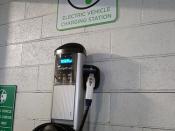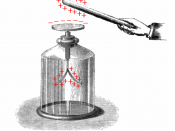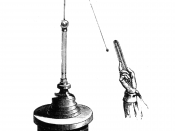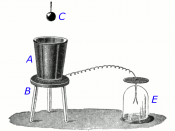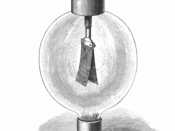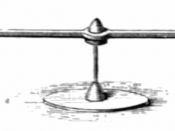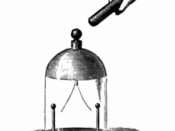Conduction and Induction Through the Electroscope We were able to use the electroscope to measure the charge of a certain material. The electroscope will be useful in classifying conductivity (Process by which charges move freely through materials in response to electric fields) of objects through the rate of discharge. (The discharge of the electroscope) We first charged the electroscope with a charged rubber rod. We then brought a charged rubber rod close to the circular plate, the free rod then eventually settled horizontally. This showed that a charge could be inducted or conducted through air. Next, we touched the circular plate with a glass rod, there was no effect and the free rod did not move. We then touched a wooden rod to the circular plate. The charged was drained slowly and the free rod returned to its original position. When Ms. Saylor put her hand closer to the tip of the rod making the rod shorter, the charge was drained at a faster rate.
This showed that resistance is proportional to length, the greater the length the greater the resistance. As is shown in the formula R L. The resistance will be smaller if the cross section of an area is greater. As is shown in the formula R 1/A, A= conductivity. The formula for resistance is R= L/A. We then touched the circular plate with a metal rod; the charged was drained at an extremely fast rate. The reason these different objects drained the charges at different rates or did not drain the charge all is because objects can be put into three categories of drainage of charge. There are those that are unobservable such as glass and silk. There are those will drain charge such as wood and cotton; these are known as semi-conductors. Then there are metals, which will drain charge very quickly; metals are known as conductors.
